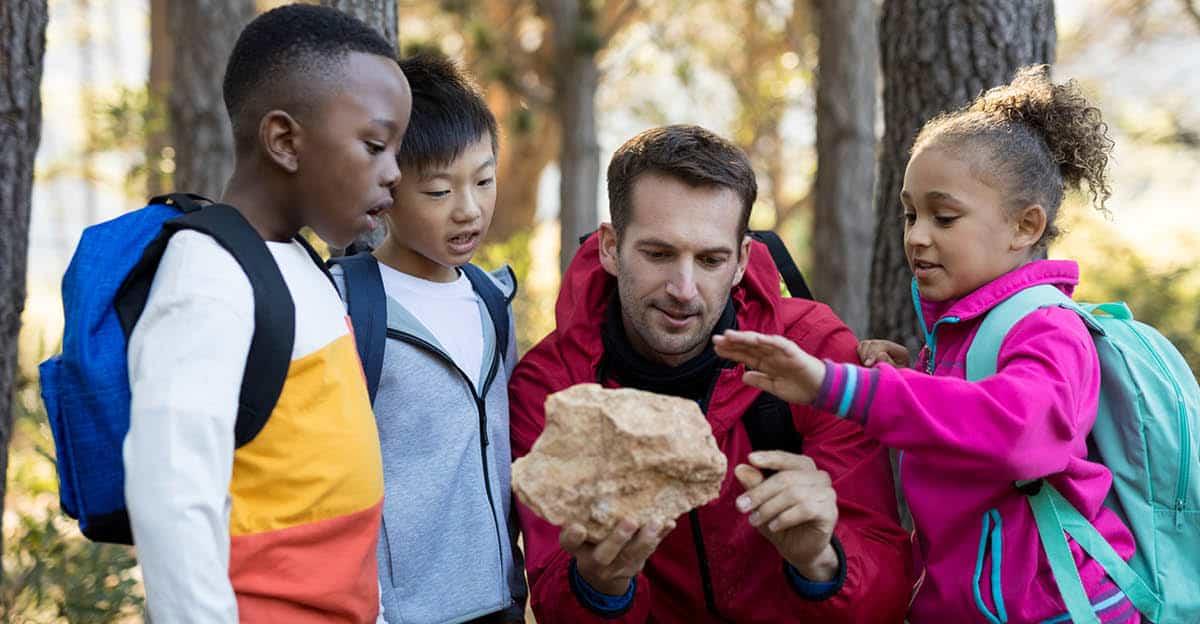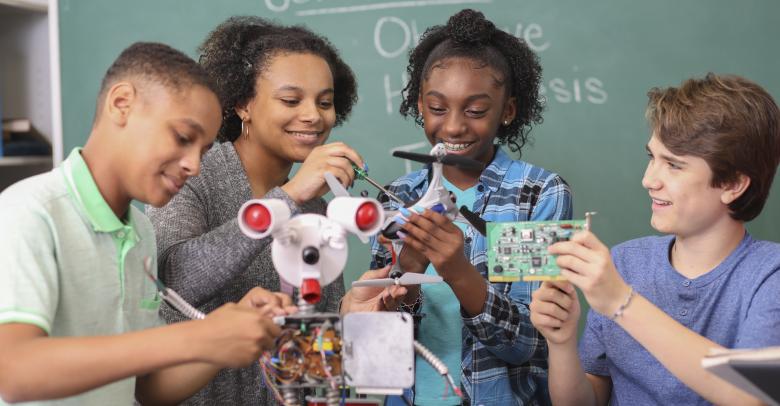Part of getting students excited to use their hands and minds to create new things is coming up with a challenge they’re interested in solving. These ideas for STEM/STEAM related activities combine the fun of outdoor learning with hands-on challenges that are sure to get students thinking with an engineering mindset.
3 Outdoor STEAM Challenges for Elementary Students
Hands-on challenges can help students to work together as a team, utilize creativity to find unique solutions, and create a more engaging lesson. Encouraging students to find solutions to a problem using the engineering design process is a great way to establish important and useful patterns of thinking. Check out these three ideas for outdoor STEAM challenges and activities for your elementary students this year.
Before beginning a STEAM activity, go over the engineering design process with your class. Remind them throughout the activity to continue using the engineering design process when finding solutions as a group.
Read More: The Scientific Method vs The Engineering Design Process
Build Natural Art: Challenges for Outdoor Learning
Using the materials found in nature, ask your students to build a structure or piece of natural art that fulfills a specific goal (criteria) within particular limits (constraints). Students can work alone or in groups to gather natural materials, consider a variety of solutions, and then test theories until a solution is found and agreed upon. Have students share with the class how they designed their structure and how the way it was built fulfills the challenge.
Here are ideas for specific structure challenges:
- Design and build a structure that holds water.
- Design and build a structure that could protect a small animal from rain.
- Design and build a structure that is made entirely from leaves.
- Design and build a structure that is made entirely from sticks.
Hide and Seek: Instruction Writing Activity
This exercise offers students an opportunity to learn about the importance of details and clear communication. Divide the class into groups and give each group an item to hide. Have each group hide the object. Then have each group design and write a set of instructions on how to find their hidden item. Designate a student to find all the hidden items by following each group’s instructions, or appoint yourself as the finder. In either case, the person searching for the items should not know where they are hidden.
Important notes for the hide and seek activity:
- Do not tell students what type of instructions they must create. As a group, they should decide whether using written instructions or creating a map will be the most efficient.
- It may take two tries for students to create instructions that are clear enough to follow. Make sure that the finder follows the instructions as exactly as possible. This allows the groups to see where they needed to improve their communication strategy or include more detail.
- Be sure to have a classroom or group discussion after the activity is finished and the items have been found. Have the finder choose their favorite instructions and explain why they were the most efficient and useful.
Three Little Pigs: Building with Natural Materials
Head outside and prepare for dirty hands and engaged minds. This activity may require the use of water, dirt, leaves, grass, wood chips, sticks, and rocks. Divide the class into groups and challenge them to use any collected things from nature to create natural building materials for designing a strong structure. Give each group access to a container for mixing and water to create their desired consistency.
Notes for the natural building materials activity:
- Encourage students to consider what natural materials we use to create buildings and structures.
- Once each group has created what they believe to be the best natural building material, ask them to create a small structure (ex: a small wall or building). If the structures require materials to dry, preserve the work and return the next day to see if they held up.
- Have each group share their recipe for the best natural building material. Discuss as a group what they did well and what they could have done to improve the material’s performance.
- Younger students may appreciate the highlighting of natural building materials in the story “The Three Little Pigs.”
More STEAM Ideas and Inspiration for Your Learning Space
If you’re looking for more ways to bring the STEAM/STEM mindset into your classroom, check out all the other activities and ideas on the STEAM/STEM category page. There you’ll find resources from educators that can make your next learning challenge the most engaging one yet!






Leave a Reply